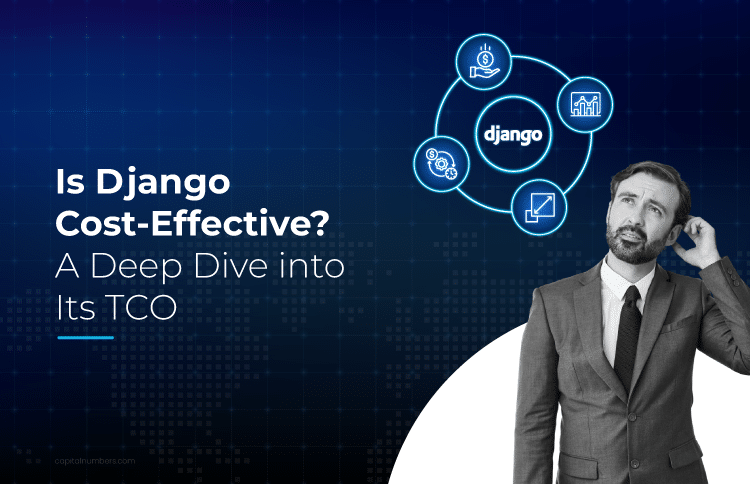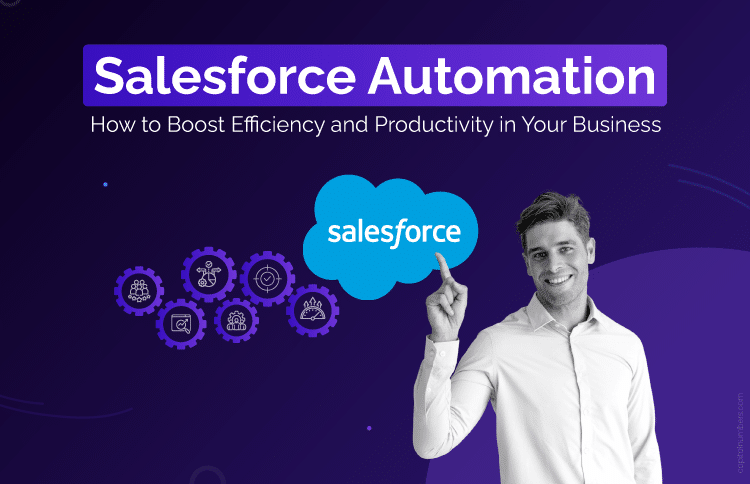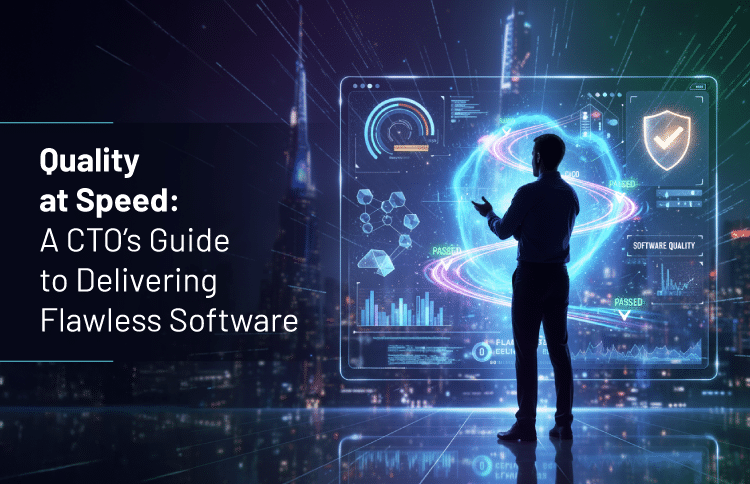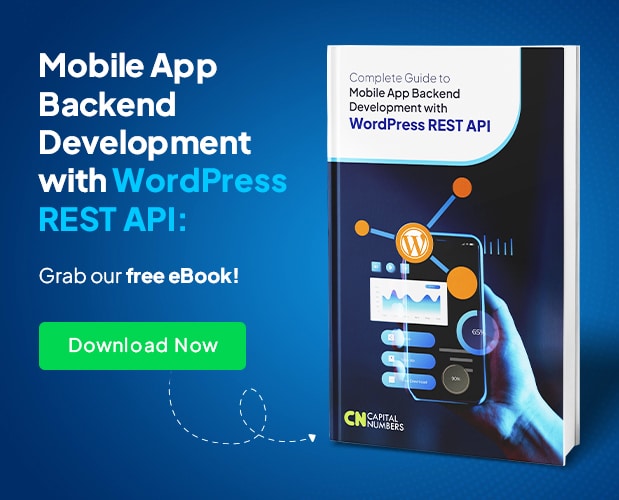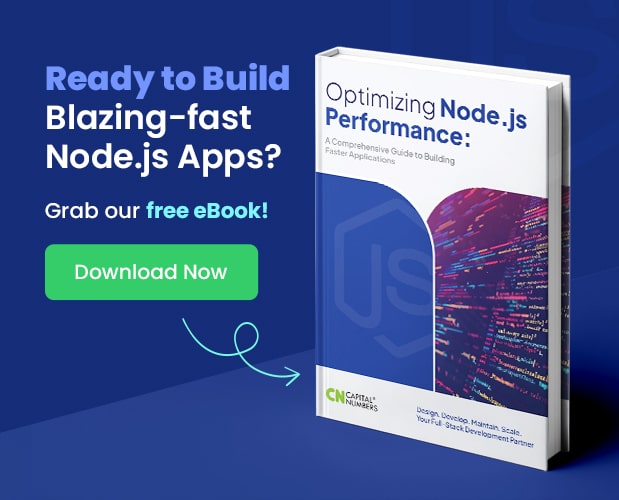Is Django Cost-Effective? A Deep Dive into Its TCO
Table of Contents
When it comes to choosing a web framework for your next project, one of the key factors to consider is cost-effectiveness. Django, a popular Python-based framework, is often recognized for its speed and scalability, but how does it really stack up in terms of total cost of ownership (TCO)? From development and maintenance costs to scalability and long-term ROI, understanding Django’s TCO is essential for businesses looking to make an informed decision.
In this blog, we’ll break down Django’s total cost of ownership (TCO), considering everything from development and maintenance to scalability and ongoing support. If you’re building a small application or scaling up for enterprise needs, we’ll help you evaluate whether Django delivers the best value for your project. Let’s explore the real cost of choosing Django for your next venture.
What is Total Cost of Ownership (TCO) in Web Development?
The Total Cost of Ownership (TCO) is the total cost of developing, maintaining, and operating a web application throughout its lifecycle. It includes upfront development costs and ongoing expenses, such as maintenance, upgrades, security, and scalability. Understanding TCO helps businesses make well-informed decisions when choosing technologies, ensuring that immediate costs and long-term investments are considered.
Key Factors Affecting TCO
- Initial Development Costs
Covers the cost of designing, building, and launching the application, including developer fees, software, tools, and infrastructure. - Long-Term Maintenance
Applications require ongoing maintenance, such as bug fixes, software updates, and performance improvements. - Security
Regular updates and monitoring are necessary to protect the application from vulnerabilities and breaches. - Scalability
A well-designed, scalable system will reduce future costs associated with handling increased traffic or user demand. - Performance
Enhancing speed and reliability may require extra investment in infrastructure and monitoring tools.
TCO in Framework Selection
When selecting a framework, businesses should consider the total cost, not just development expenses. A framework with lower initial costs may require more frequent updates and security patches or lack the scalability needed, resulting in higher long-term costs.
- Maintainability: Is the framework easy to maintain and update over time?
- Built-in Features: Does it come with tools that reduce future development and support costs?
- Community Support: A strong community can resolve issues quickly and reduce time spent troubleshooting.
By evaluating the TCO, businesses can choose a framework that is cost-effective in the long run and capable of supporting future growth.
Looking for Expert Django Developers?
At Capital Numbers, our skilled Django developers deliver high-quality, cost-effective solutions tailored to your needs. Get in touch today to build your next project with the best!
Initial Development Costs with Django
When evaluating Django’s cost-effectiveness, the framework offers significant savings during the early stages of development. With its built-in tools, easy-to-use processes, and comprehensive feature set, Django helps reduce development costs. The availability of pre-built solutions for common tasks minimizes the need for custom development, saving time and money.
a. Faster Time to Market
Django’s built-in features, such as the admin panel, authentication, and ORM, reduce the time spent on repetitive tasks, which directly contributes to faster time to market and lower upfront costs. By using these ready-made tools, businesses can launch their products quickly, reducing the total cost of ownership for Django.
- Built-in features save on development time.
- Quicker deployment lowers initial development expenses.
- Faster market entry helps recoup costs sooner.
b. Reduced Need for Third-Party Tools
One of the main ways Django helps businesses save money is by reducing the need for external tools. The framework offers a variety of built-in features, meaning businesses don’t have to purchase third-party software or invest in custom-built solutions, leading to significant savings in Django development and maintenance costs.
- Less dependency on third-party tools cuts down licensing costs.
- Fewer external services reduce Django hosting expenses and maintenance efforts.
- Simplified updates reduce the complexity and cost of managing the project over time.
You May Also Read: Top 10 Django Packages That Every Developer Should Use
Ongoing Maintenance Costs
Django’s design offers several advantages that help keep ongoing maintenance costs low. With its strong community support and robust security features, Django proves to be a cost-efficient solution for businesses in terms of Total Cost of Ownership (TCO).
a. Community Support
Django benefits from a large, active community that provides free resources, tutorials, and open-source tools. This reduces the need for expensive external help, allowing businesses to rely on community-driven solutions and advice. The active support network ensures that issues are resolved quickly, reducing downtime and minimizing the need for costly support services.
- Free resources significantly reduce ongoing support expenses.
- Community-driven solutions reduce reliance on external vendors.
- Quick troubleshooting helps minimize downtime and support costs.
b. Security Maintenance
Django’s built-in security features help protect applications from common vulnerabilities, reducing the risk of costly security breaches. Automatic security updates ensure applications remain secure without manual intervention, minimizing the need for additional security-related expenses. This proactive approach to security directly impacts TCO, especially for businesses dealing with sensitive data or operating in regulated industries.
- Automatic security updates reduce the risk of costly security breaches.
- Django’s security features simplify compliance with industry standards, lowering the need for external security tools.
- Reduced reliance on external security services helps control ongoing maintenance costs.
You May Also Read: Django Security Checklist: Must-Do Steps for a Safe Web Application
Scalability and Performance Costs
Django is designed to support growing businesses and large-scale applications efficiently. As your business expands, the framework can scale without requiring costly infrastructure upgrades or significant changes to the architecture. This long-term scalability directly contributes to a lower TCO by ensuring your application can handle increased demand without expensive upgrades.
a. Handling Growth
Django allows businesses to scale easily without major changes to the architecture or significant upgrades. Its flexible structure ensures that as your application grows, it can handle increased demand without incurring high additional costs. This makes Django a great choice for complex, evolving web applications and contributing to long-term TCO.
- Easily scale with minimal changes to the architecture.
- No need for expensive infrastructure upgrades as traffic increases.
b. Performance Optimization
Django’s built-in tools, like caching and query optimization, enable performance improvements at no additional cost. By using these features, businesses can boost performance, reduce hosting expenses, and enhance load times without relying on expensive external services, all of which help lower TCO over time.
- Built-in tools optimize performance at no extra cost.
- Performance enhancements like caching are simple and cost-effective.
- Reduces reliance on external optimization services, lowering maintenance costs.
Long-Term Cost Efficiency with Django
Django offers long-term cost benefits that make it a smart choice for businesses looking to save money over time. Its open-source nature and stability help reduce ongoing costs, while its scalability ensures a future-proof web application, ultimately contributing to a lower Total Cost of Ownership (TCO).
a. Open-Source Advantage
Django’s open-source nature eliminates licensing fees, significantly reducing long-term expenses. Since Django is free to use, businesses don’t have to worry about recurring software costs or subscription fees, making it a highly cost-efficient option for web development.
- No licensing fees help lower long-term expenses.
- Eliminates the cost of software renewals or subscription services.
b. Future-Proofing
Django’s stability and regular updates ensure that your web application remains secure and modern. This reduces the need for costly upgrades or platform migrations in the future, allowing businesses to maintain a reliable application without frequent major changes, which directly impacts TCO.
- Regular updates keep your application secure and up-to-date.
- Stability reduces future migration costs.
- Django’s reliability minimizes the need for costly overhauls.
Django’s TCO: At a Glance
| Cost Aspect | Cost Benefits |
|---|---|
| Initial Development Costs | Lower due to Django’s built-in features (admin panel, authentication, ORM), which reduce development time and upfront expenses. |
| Third-Party Tools | Minimal reliance on third-party tools, as Django provides many built-in functionalities, reducing licensing and integration costs. |
| Ongoing Maintenance Costs | Lower due to strong community support, free resources, and automatic security updates that reduce the need for paid support. |
| Hosting Expenses | Reduced costs as Django’s efficient performance lowers infrastructure requirements, minimizing Django hosting expenses. |
| Security Maintenance | Easily scalable with minimal architecture changes, allowing businesses to grow without incurring high additional costs for upgrades or infrastructure. |
| Long-Term Costs | Open-source nature eliminates licensing fees, while Django’s simplicity and stability help businesses save on maintenance and upgrades over time. |
Comparing Django’s Cost-Effectiveness with Other Frameworks
When comparing Django’s cost-effectiveness to frameworks like Ruby on Rails and Laravel, key factors to consider are development speed, ongoing maintenance, and long-term costs. Django stands out due to its efficiency, built-in features, and stability, which help reduce both short-term and long-term costs.
Development Speed and Costs
- Django: Django makes development faster with its built-in features like the admin panel, ORM, and authentication system. These tools cut down the need for third-party solutions, leading to lower initial development costs as developers don’t have to reinvent basic functions.
- Ruby on Rails: Rails is also fast but often relies on third-party gems (external libraries), which can add complexity and higher development costs. Integrating these gems can make Rails projects more expensive initially.
- Laravel: Laravel is preferred for its clean syntax and modular design. However, it needs more external packages for certain tasks, leading to slightly higher development costs compared to Django. More integration means a higher time and money investment.
Winner: Django. Its built-in tools make development faster and more cost-effective, while other frameworks require more external dependencies.
Maintenance Costs
- Django: Django’s clear structure and strong community support help reduce maintenance costs. Its built-in features and automatic updates mean businesses spend less on ongoing support and updates.
- Ruby on Rails: Rails also has a solid community, but because it relies on many third-party gems, maintenance can become more expensive over time. These gems need regular updates, which can drive up maintenance costs.
- Laravel: Like Rails, Laravel depends on external packages. This increases maintenance costs because businesses need to manage updates and ensure compatibility, especially in the long term.
Winner: Django. Its simple structure and strong community support help keep maintenance costs lower than those of Rails and Laravel.
Long-Term Costs
- Django: Django is open-source, meaning there are no licensing fees. Regular updates and its stability also keep long-term costs low, as businesses don’t need to worry about costly upgrades or platform migrations.
- Ruby on Rails: While Rails is also open-source, it often depends on paid gems and can be more expensive in the long run due to migration costs and updates.
- Laravel: Like Rails, Laravel’s reliance on third-party packages means that long-term costs can be higher due to the need for constant updates and upgrades.
Winner: Django. Its open-source nature, regular updates, and built-in tools reduce long-term costs compared to other frameworks.
You May Also Read: Top 10 Qualities to Look for When Hiring Django Developers
Final Thoughts
Django is a highly cost-effective web development framework that helps businesses save on both initial development and long-term maintenance costs. Its built-in features, open-source nature, and strong community support make it a great choice for building scalable, secure, and future-proof applications. Compared to other frameworks like Ruby on Rails and Laravel, Django offers a more efficient development process, lower ongoing costs, and more flexibility for growth.
If you’re looking for a scalable and cost-efficient web application, Capital Numbers can help. Contact us today for a free consultation and take full advantage of Django’s capabilities.

